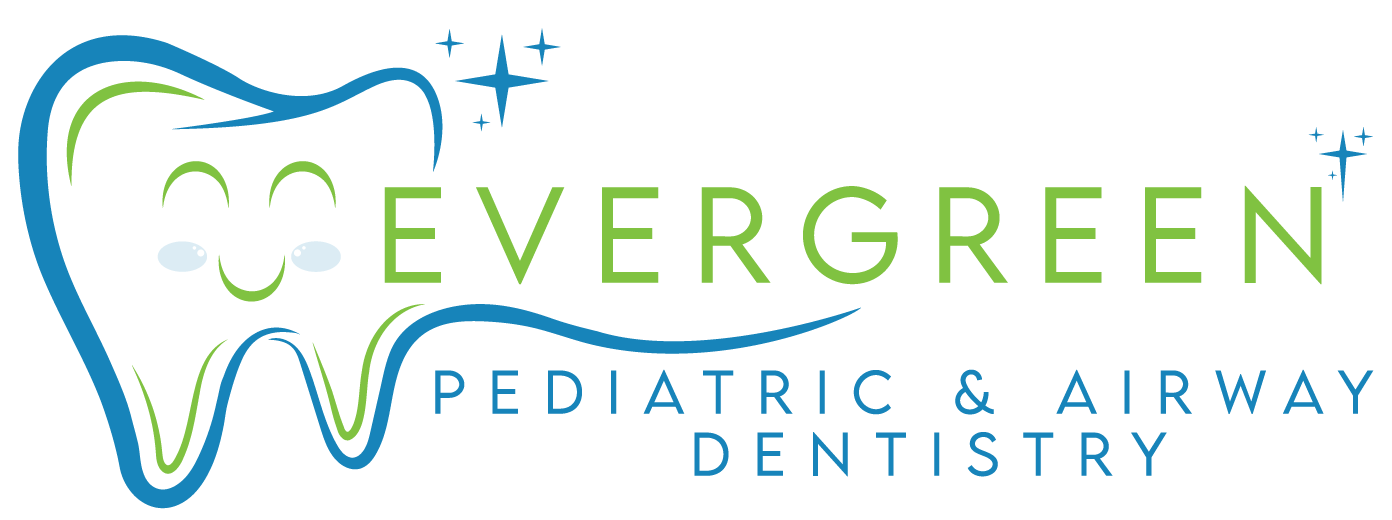Sleep Apnea Treatment Near Me Kirkland WA
Welcome to your indispensable journey towards finding the right sleep apnea treatment provider. This guide is not just another piece of information, but a comprehensive roadmap illuminated by expert insights and practical advice. Sleep apnea, a common yet often overlooked disorder, has significant health implications if left untreated. But don’t worry! The path to restful nights and energized days doesn’t have to be a labyrinth. It’s about making informed decisions, understanding your unique needs, and partnering with a provider who genuinely cares about your wellness. So whether you’re newly diagnosed, dissatisfied with your current treatment, or looking for a loved one, this guide is your beacon in the often foggy landscape of sleep apnea treatment. Read on, as we unravel the essentials of selecting the right provider for your path to better sleep and healthier life.
Understanding Sleep Apnea and Its Treatments
Sleep apnea is a prevalent sleep disorder characterized by interrupted breathing during sleep. This interruption can occur hundreds of times in a night, leading to a decrease in oxygen supply to the brain and the rest of the body. Understanding this condition and its potential treatments is key to ensuring quality sleep and overall health.
There are three main types of sleep apnea: obstructive, central, and mixed. Obstructive sleep apnea, the most common type, occurs when the muscles in the back of the throat relax and block the airway. Central sleep apnea, on the other hand, happens when the brain doesn’t send proper signals to the muscles that control breathing. Mixed sleep apnea is a combination of both.
Sleep apnea can lead to various health complications if left untreated, including high blood pressure, heart problems, type 2 diabetes, and even depression. Common symptoms include loud snoring, episodes of breathing cessation during sleep, abrupt awakenings accompanied by gasping or choking, and excessive daytime sleepiness.
When it comes to treating sleep apnea, there are several options available. Lifestyle changes, such as losing weight, quitting smoking, or avoiding alcohol and certain medications, can greatly help manage the symptoms. Continuous Positive Airway Pressure (CPAP) therapy, which involves wearing a mask over your nose and/or mouth while you sleep, is another common treatment. The mask is attached to a machine that delivers a constant flow of air into the nostrils, helping to keep the airways open.
In more severe cases, or when other treatments aren’t effective, surgery may be considered. The specific procedure will depend on the cause of the sleep apnea and the physical structure of the upper airway. Some surgical options include tissue removal, jaw repositioning, implants, nerve stimulation, or creating a new air passageway.

Sleep Apnea Treatment
Assess Your Personal Treatment Preferences
When it comes to treating sleep apnea, one size doesn’t fit all. The effectiveness of a treatment can vary significantly from person to person, making it essential for you to assess your personal treatment preferences. This self-evaluation can help you find a treatment that not only addresses your sleep apnea but also aligns with your lifestyle and comfort.
Firstly, consider your comfort level with various treatment options. Some people might find wearing a Continuous Positive Airway Pressure (CPAP) mask while sleeping comfortable and effective, while others might find it intrusive. Similarly, an oral appliance designed to keep the airways open might be suitable for some but not for others. It’s crucial to discuss these options with your healthcare provider and consider trying out different methods to find what works best for you.
Secondly, think about your willingness and ability to make lifestyle changes. Some lifestyle modifications, such as losing weight, quitting smoking, or limiting alcohol intake, can significantly improve sleep apnea symptoms. However, these changes require commitment and discipline. Assess your readiness to make these changes and how they align with your current lifestyle.
Thirdly, consider the severity of your condition. If your sleep apnea is mild, lifestyle changes or the use of an oral appliance might be sufficient. However, for moderate to severe sleep apnea, more intensive treatments like CPAP or surgery might be necessary. Understanding the severity of your condition can help you evaluate your comfort with these more invasive treatment options.
Lastly, think about the potential impact of the treatment on your daily life. Some treatments, like CPAP, require regular maintenance and cleaning. Others, like surgery, may require recovery time and could have potential side effects. Consider how these requirements fit into your daily routine and responsibilities.
Create a Local Provider Checklist
When seeking treatment for sleep apnea, having a checklist tailored to your local provider can be an invaluable tool. This list can guide you through the process, ensuring you ask the right questions and receive the most effective care. Here is a comprehensive guide to creating a local provider checklist for sleep apnea treatment.
Firstly, it’s important to understand the treatment options available. Positive Airway Pressure (PAP) therapy is often the first line of treatment for obstructive sleep apnea. This therapy keeps your airway open during the night by gently blowing air into your throat. As part of your checklist, ensure that your local provider offers this treatment and has the necessary equipment and expertise.
Secondly, consider the physical and anatomical reasons for your sleep apnea. Every individual is unique, and the causes of sleep apnea can vary from person to person. Ask your doctor about your specific causes and discuss how these might influence your treatment options. This discussion can help tailor your treatment to your specific needs.
Next, familiarize yourself with local and state policies regarding sleep apnea treatments. Different locations may have different regulations and coverage policies. Check with state medical boards and insurance providers to ensure that your chosen treatment is covered and compliant with local rules.
Fourthly, prepare for a clinical re-evaluation after initiating therapy. This should occur no sooner than the 31st day but no later than the 91st day after starting treatment. This re-evaluation is crucial to assess the effectiveness of the treatment and make any necessary adjustments.
Finally, consider using self-test tools like the STOP-BANG questionnaire. This tool can help you assess your condition and monitor your progress. Although it doesn’t replace professional diagnosis and treatment, it can provide valuable insights and help you communicate more effectively with your healthcare provider.

Sleep Dentistry
Research and Shortlist Potential Providers
When it comes to treating sleep apnea, selecting the right healthcare provider plays an instrumental role. Not only will they be responsible for diagnosing and treating your condition, but they will also guide you through the process and provide much-needed support. Here’s how you can research and shortlist potential providers for your sleep apnea treatment.
Firstly, start by identifying potential providers in your area. This can include sleep clinics, hospitals with sleep centers, and independent sleep specialists. You may want to consider the proximity of these providers to your home or work, as regular visits may be necessary, especially in the early stages of treatment.
Secondly, investigate the credentials and experience of the potential providers. Look for board-certified sleep medicine physicians who have undergone specific training and education in sleep disorders. Additionally, consider the years of experience they have in treating sleep apnea specifically. Experienced providers are more likely to be up-to-date on the latest treatments and technologies.
Next, consider the range of treatment options offered by the providers. While Positive Airway Pressure (PAP) therapy is the most common treatment for sleep apnea, other options such as oral appliances, positional therapy, and lifestyle changes may also be effective. Providers that offer a broad range of treatments can tailor your treatment plan to your specific needs and preferences.
Fourthly, look at the patient reviews and feedback for the potential providers. These can provide valuable insights into the provider’s bedside manner, staff professionalism, and overall patient satisfaction. However, remember to take online reviews with a grain of salt as they can sometimes be skewed.
Lastly, schedule initial consultations with your shortlisted providers. This will give you a chance to meet them in person, discuss your condition and concerns, and get a feel for their approach to treatment. You should feel comfortable asking questions and expressing any concerns during these consultations.
Interview Your Shortlisted Providers
After conducting thorough research and shortlisting potential providers for sleep apnea treatment, the next step is to interview them. This process allows you to gain a deeper understanding of their approach to treatment, their expertise, and whether they are a good fit for your healthcare needs. Here’s how to effectively interview your shortlisted providers.
Firstly, prepare a list of questions to ask during the interview. This list should include questions about their experience with sleep apnea treatment, their understanding of the latest research and developments, and details about the treatment plan they might propose for you. Remember, there are no wrong questions when it comes to your health.
Secondly, during the interview, pay attention to the provider’s communication style. You want a provider who listens to your concerns, explains things in a way that you understand, and makes you feel comfortable. A good provider will take the time to answer your questions and ensure you fully understand your condition and treatment options.
Thirdly, inquire about the support system in place. Treating sleep apnea often involves lifestyle changes and ongoing adjustments to treatment plans. Ask about the availability of resources like nutrition counseling, psychological support, and equipment troubleshooting. These resources can be invaluable in helping you navigate the treatment process and manage your condition effectively.
Fourthly, discuss the follow-up protocol. Regular check-ups and monitoring are crucial components of successful sleep apnea treatment. Ensure that the provider has a robust follow-up system in place and that they are committed to adjusting your treatment as necessary based on your progress and feedback.
Finally, trust your instincts. After gathering all the information, listen to your gut feelings about each provider. Do you feel heard and respected? Do you trust their expertise? Do you feel comfortable entrusting them with your healthcare needs?

Professional Sleep Apnea Treatment
Make an Informed Decision
Choosing the right treatment for sleep apnea is a decision that should be made with utmost care and consideration. With numerous treatment options available, it can seem daunting. However, by understanding your unique needs and considering all the available information, you can make an informed decision that will significantly improve your quality of life.
The first step in making an informed decision is understanding the various treatment options available. The most common and reliable method is Continuous Positive Airway Pressure (CPAP) therapy, which keeps your airway open while you sleep. However, some people may find this method cumbersome. Other treatments include lifestyle changes such as weight loss through exercise and diet, and in some cases, medication. These can prove effective in treating obstructive sleep apnea.
Next, consider the severity of your condition and your comfort. For moderate to severe sleep apnea, CPAP is often recommended. However, if you find it uncomfortable, there are other options available. For instance, some healthcare professionals may recommend devices that work inside your body to treat the root cause of sleep apnea. It’s important to discuss these options with your provider and consider your comfort and lifestyle.
Thirdly, remember that treatment is not a one-size-fits-all approach. What works for one person may not work for another. Therefore, it’s critical to consider your unique circumstances and preferences when choosing a treatment. This might include your daily routine, ease of use of the treatment, and potential side effects.
Fourthly, keep in mind that regardless of the treatment you choose, follow-up is crucial. Your doctor may want you to do a follow-up sleep study to assess the effectiveness of the treatment. Regular check-ups allow your healthcare provider to monitor your progress and make necessary adjustments to your treatment plan.
Finally, take your time to make this decision. It’s essential to weigh all the pros and cons, discuss with your healthcare provider, and even seek a second opinion if necessary. Remember, the goal of treatment is to improve your sleep and overall health, so the decision should be one that you’re comfortable with.
Conclusion
Selecting a sleep apnea treatment provider near Kirkland WA is a significant step toward improving your health and quality of life. By understanding your condition, preferences, and local options, you’re empowering yourself to become an active participant in your treatment. Remember that finding the right provider is about more than just their qualifications—it’s about building a supportive, effective partnership that’s crucial to your long-term health goals. Take the time to find a provider who resonates with you, and commit to the journey towards better sleep and well-being. Remember, you deserve the best care possible, and by following these guidelines, you can find a provider who will help you achieve it.


